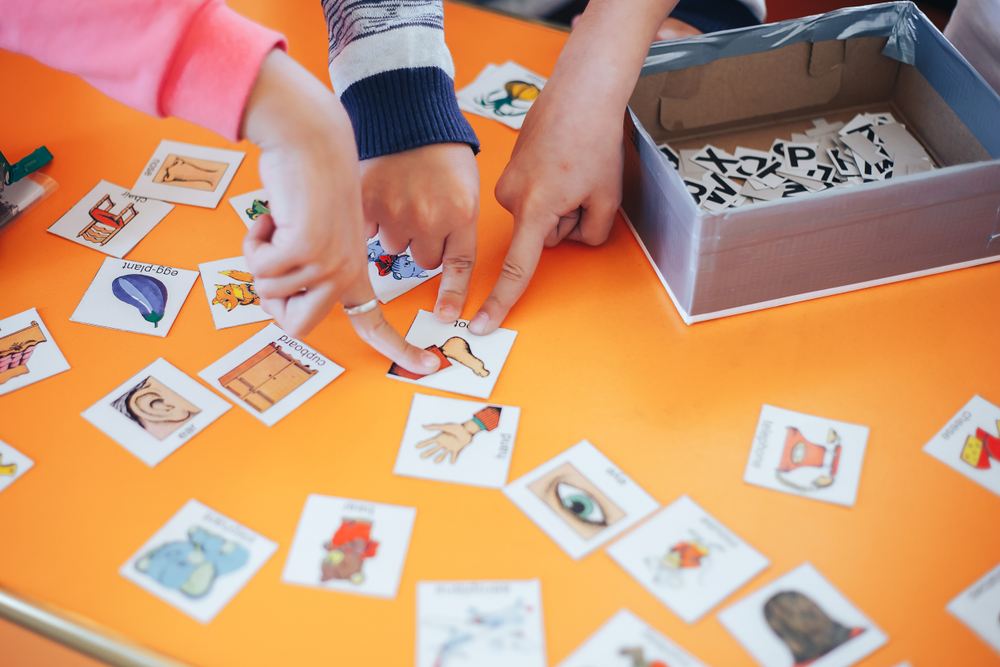
The pandemic caused a learning crisis. While some students had access to help and online capabilities that allowed them to continue to learn as schools shutdown, others did not have the technology necessary to keep up with schoolwork. Unfortunately, many children fell behind during remote learning.
The Nation’s Report Card noted that the majority of fourth graders (in 2022) weren’t reading at a proficient level. In fact, only one out of three fourth graders scored proficient or advanced in reading. As basic and below basic reading levels outpace proficiency, how can teachers help struggling readers increase their reading skills?
Understanding the Science of Reading
More states are reverting back to a reading curriculum that focuses on the science of reading. This type of curriculum emphasizes phonics skills to help students gain proficiency at decoding words, understanding word patterns, letter arrangements, etc.
Many districts were utilizing an approach that helped struggling readers ‘decode’ words using pictures in books as a clue. Unfortunately, children who used these reading strategies didn’t progress beyond a certain point. Thus, they might have fallen further behind.
States and school districts are beginning to recognize that an impactful and effective reading curriculum requires that students master the code of reading. The code, of course, is the alphabet and all the letters and sounds within it.
As children learn sounds, blends, word arrangements, patterns and more, they can begin to crack the code that helps them to gain the ability to sound out new and unfamiliar words. Districts that used a reading curriculum that focused on picture clues might have taught students to simply guess a word instead of teaching them how to correctly read it through proper decoding skills developed through phonics.
Children who struggle to read at a proficient level might struggle because they never grasped the early foundational skills of reading. That is, these children might not have been taught how to decode through phonics lessons and exercises.
Every Child Learns Differently
Each student has strengths and weaknesses. Some children struggle with attention and can’t seem to sit still through long lessons. Others might have auditory processing issues and need to ‘see’ a lesson to fully grasp it and master the content.
Other children are auditory learners. This means that they learn best through hearing a lesson. Children who are auditory learners might benefit from hearing books as they follow along. Listening to audiobooks or listening to a story read aloud to them could help improve comprehension and help them to better understand the sounds of a word.
Teachers don’t always have the time to give every child the one-on-one instruction that they might need. In addition, structuring lessons to each child’s strengths could be difficult in a larger classroom setting. However, children with an IEP might have accommodations or learning strategies built into their plan that can help a teacher better tailor lessons to help them master and process the content.
Teachers also could choose to use dual learning strategies to appeal to different learners. For example, teachers might choose a reading program that allows children to read books aloud (or silently) but that also includes an option for listening to the book.

Create Immersive Learning Experiences
Reading lessons don’t have to be boring. Have fun with lessons!
For example, younger students need to master sight words to help their reading journey and increase their fluency. Classroom games and activities can help children master these words.
Create a hopscotch board with sight words. As children play, they might be instructed to read the word as they hop. In addition, a bean bag toss game can employ a similar learning structure; when the child throws the bean bag on a word, they need to read it.
A reading comprehension ball helps children learn through play. This ball is just a beach ball with story questions on each section. Toss the ball softly to a student; the question or prompt that they see is the one they need to answer.
There are many other ways to use games to support reading lessons. Create a unique reading game for the class.

Offer High-Low Books
Children who struggle with reading might feel embarrassed that they are reading at a lower level than other classmates or friends. They also could feel that lower-level books are ‘babyish’ or appeal to younger children.
Teachers can include a library filled with high-low books for children who read at a lower level. These books are designed to appeal to the child’s age and maturity while including text that’s less complicated and at their reading level. Reading Rockets offers a list of fun high-low books that will interest children and encourage them to read.
Rewards Can Be Motivating
Many teachers offer rewards related to reading goals. The reason why rewards systems are so popular is simple: they work! However, teachers need to be cautious in how they design these rewards systems.
School districts around the country use a program called Accelerated Reader (AR) to gauge students’ reading comprehension. AR includes comprehension quizzes for an extensive list of fiction and nonfiction titles across all grade levels. When children earn a specific score on a quiz, they receive points. Longer books or more difficult books correlate to higher point values.
Teachers might create a rewards program around AR. When children accumulate points, they might receive a specific prize. For example, when a child accrues 50 AR points they might get to choose a pencil topper. At 100 points, they might receive a ‘homework pass.’ Some teachers even give out gift certificates or other cool prizes.
The caveat to rewards programs for AR, though, is that some teachers discover that children read easier books to accumulate points quickly. Some teachers might be concerned that children aren’t challenging themselves to read longer or more difficult books.
Use a Reading Program in Class
Teachers can use Readability in their classroom to help readers who are struggling to reach grade-level literacy benchmarks. Readability can be used by children in kindergarten through sixth grade and includes a library of books at every reading level.
Readability can help level the playing field for children who don’t have access to books at home. In addition, the program offers a built-in reading tutor. This tutor is unique in that it’s powered by AI and learns the child’s voice. Since children read books aloud through the program, the AI tutor can understand if the child is struggling with a word. The tutor also provides encouragement and guidance to keep children engaged.
Readability can be used by children who struggle with decoding, comprehension or both. As the child reads, the tutor measures the child’s fluency (words read per minute). When the child finishes reading a book, they take a comprehension quiz that measures their understanding of what they read. If the student incorrectly answers a question, the tutor shows them a section of the book that helps them identify the answer. The tutor also reads this aloud, and the child is provided with another opportunity to answer the question.
Vocabulary knowledge also can aid a child’s reading journey. Readability includes a list of vocabulary words for every book in a child’s library. In addition, the child can tap any word in the story to hear the definition or listen to the word used in a sentence.
Teachers can follow every child’s reading progress via a private portal. In this portal, teachers can review the child’s current reading level, reading fluency, comprehension mastery and even see how long the student used Readability.
Since Readability is designed to be used throughout elementary school, even children who read proficiently could use the program as part of their daily reading curriculum. Proficient readers could move up quickly and advance to higher grade levels.
For districts interested in exploring Readability, sign up for a free trial to learn more about the reading program and meet the AI tutor.

 Español
Español